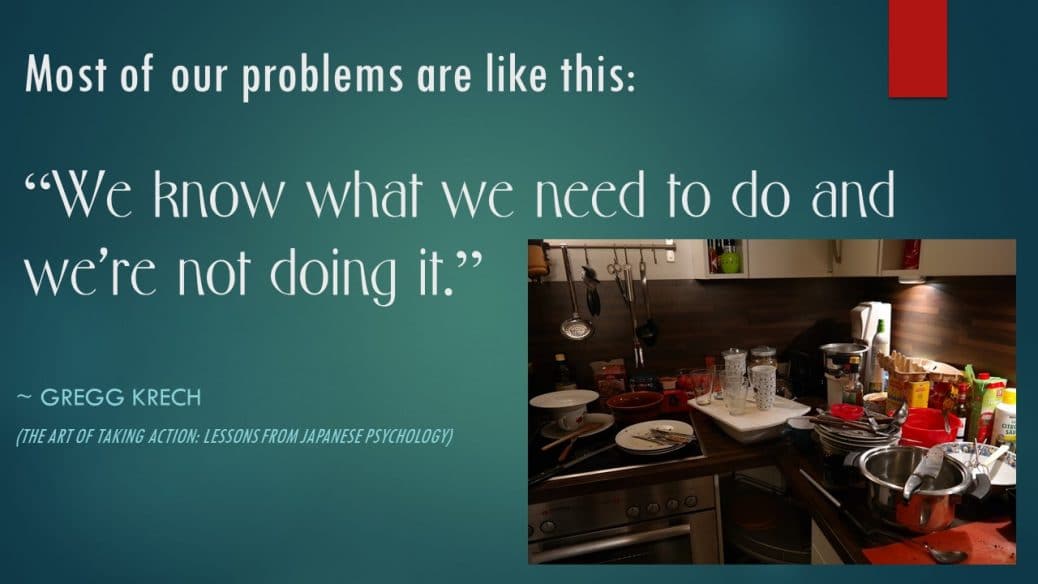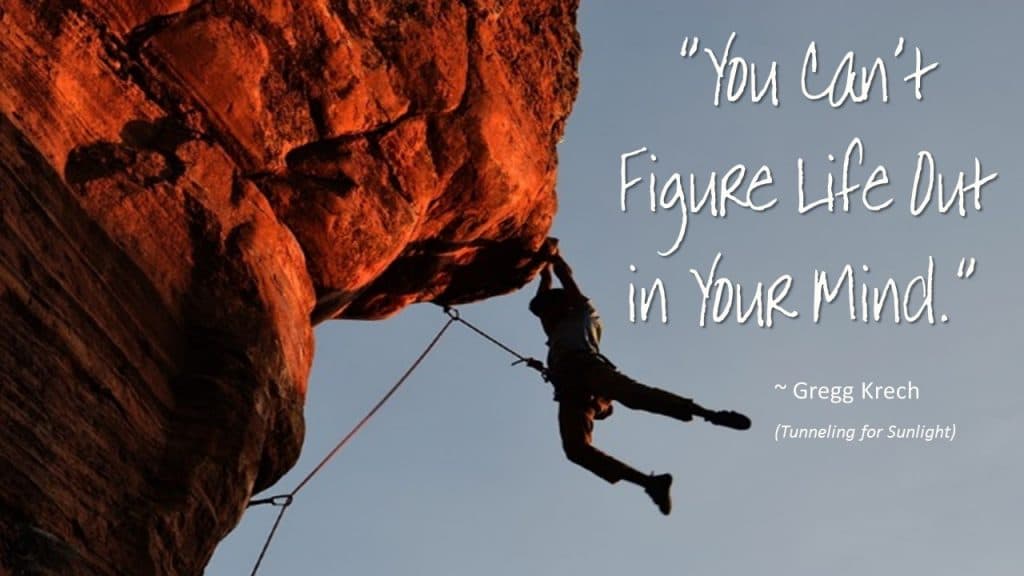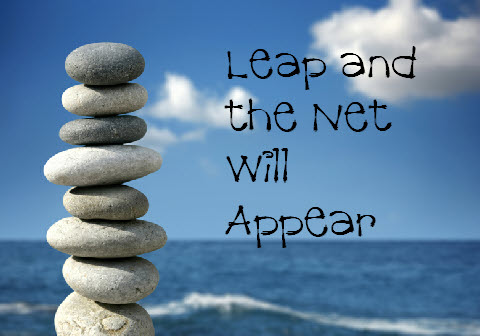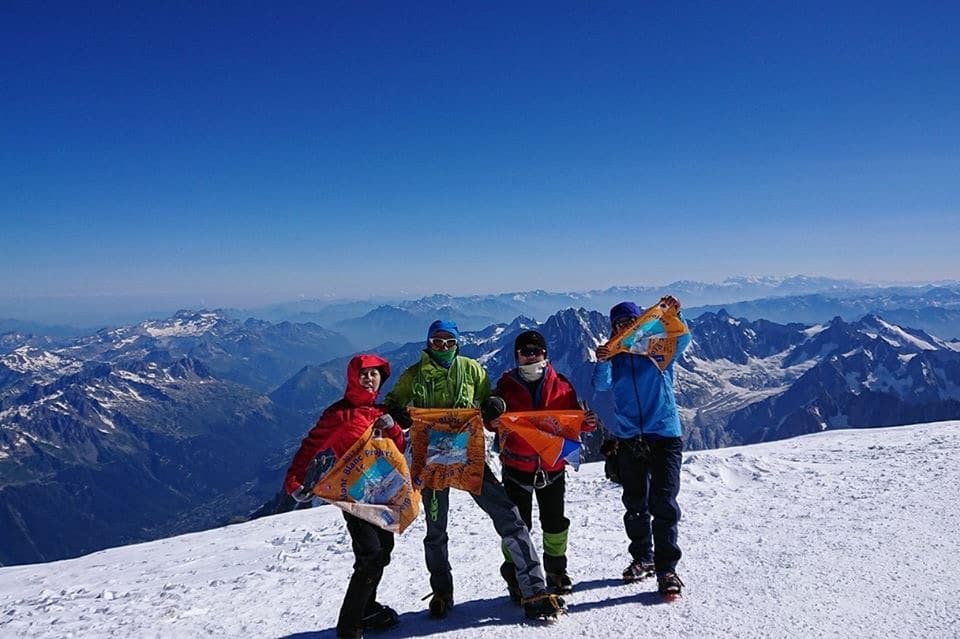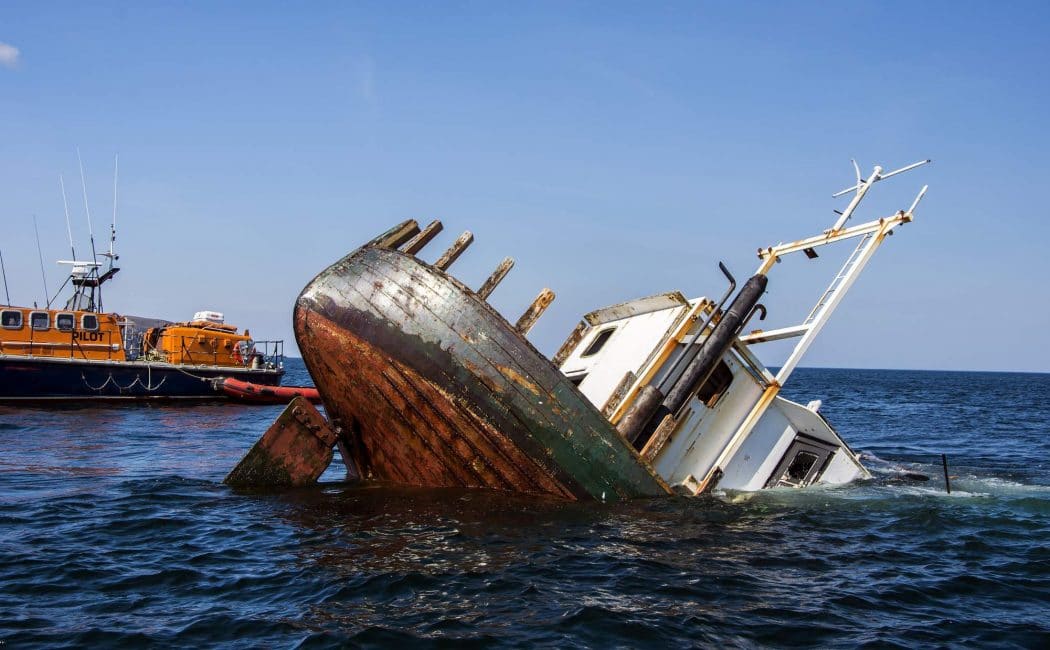Don’t try to think yourself into taking action. Don’t wait until you’re feeling better. The term used in Zimbabwe for anxiety and depression, Kufungisisa, means “thinking too much.” Do you sometimes think too much, instead of just acting?
Your body was designed with the gift of movement. Let it fulfill its purpose. Let your body launch you into action. Don’t try to figure it all out in your mind. That is a path of endless spinning which gets you nowhere.
Movement allows life to be revealed from a different perspective. In an art museum, patrons examining a painting from one spot move a few feet in order to observe art from a different angle. Music sounds different depending on where in the room we’re sitting. How we understand life depends on our perspective and that perspective changes when we move . . even a few inches.
We believe that having a plan reduces our risk. But moving through life always involves risk and the greatest risk is often doing nothing when we know we should be doing something.
Even a well-thought out, meticulous plan is subject to an infinite number of unanticipated variables.
In the famous allied forces escape from the German Stalag Luft III in World War II (movie – The Great Escape), the British inmates spent a year planning and digging three tunnels to be used as escape routes. It was an ambitious plan that would involve the escape of 200 prisoners. But the plan kept running into unanticipated obstacles. One of the tunnels was discovered. Another had to be closed. And when the time came for the actual escape, the escape door outside the prison was frozen shut! It was one of the coldest nights of the winter. When they finally opened it, they discovered they had misjudged the distance and the tunnel exit was too close to the guard tower and not under the cover of the nearby forest. Only 76 of the 200 men cohort made it out of the camp before they were discovered. And in the aftermath, 73 of the escapees were recaptured.
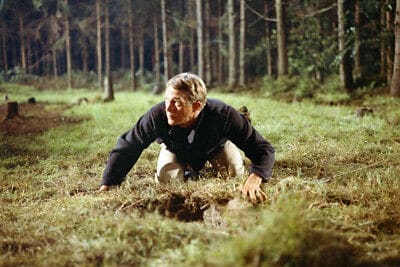
There’s nothing wrong with having a plan, as long as we realize that the moment we begin taking action, we may have to jettison part or all of that plan as we face the unfolding of real life. The danger of planning is that it becomes an excuse for not taking action.
Once we begin taking action, we almost never move in a straight line. The path is full of obstacles, twists and turns and often we can’t see beyond the next step or two. And we get distracted by something appealing or entertaining (video of baby laughing while being licked by puppy goes here). Or we just make mistakes and take the wrong road.
“I took the wrong road. I can’t turn back now.”
Kenny “Blues Boss” Wayne
(Note: In many cases, Kenny, you can turn back).
So it’s important for us to pause, step back and regroup from time to time. Where are we at this point? Are we headed in the right direction? Which way from here?
An Air Force pilot was flying a training mission over water many years ago where there was a significant crosswind. The navigator was supposed to correct the flight path by turning the plane into the wind to maintain a straight course. Instead of subtracting the correction, he mistakenly added the correction which doubled the error. To compound the problem, the aircraft experienced a temporary electrical failure, making all navigational instruments unusable for a period of time. As a result, the pilot turned the plane around to return to base. Shortly thereafter, he discovered they were 350 miles off course.
Our bodies have much more capacity and power than we give them credit for. So use your body to launch yourself on the journey. And use your mind to pause and reflect on where you’ve been, where you are and . . . where you need to go.
They make a good team.
Gregg Krech is the author of five books on Japanese Psychology, including The Art of Taking Action: Lessons from Japanese Psychology. His annual TAKING ACTION PROGRAM will begin on Feb. 19, 2024.
Tags: Kaizen Morita Therapy Procrastination Taking Action
